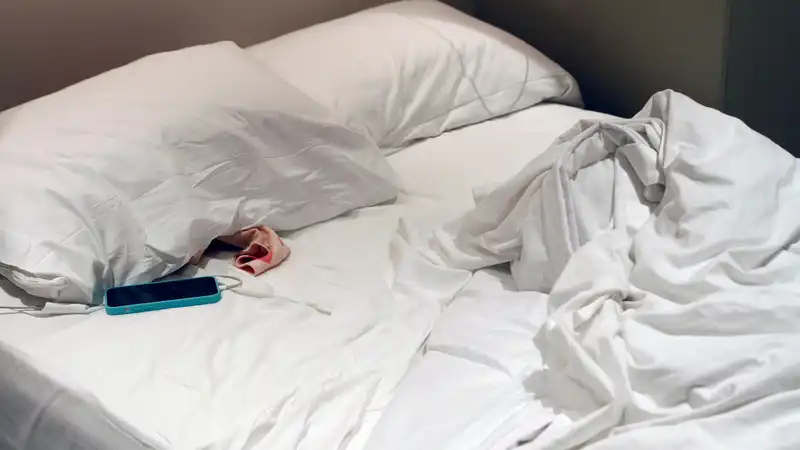Dust mites are microscopic pests that inhabit four out of five homes in the United States, and even the best mattresses with the latest hypoallergenic technology are not immune to their presence. As their name suggests, dust mites lurk in hidden, dusty places in our homes, feeding freely on our dead and flaking skin.
If you haven't dusted under your bed or washed your sheets in a while, chances are good that mites are feeding and reproducing there. Mites cannot be seen with the naked eye, but there are signs that indicate their presence.
"If there are no bite marks but it itches uncontrollably, you are most likely sharing your bed with a swarm of mites," says Rebecca Swain, mattress specialist at Winstons Beds. 'You can't see the mites without a microscope, but if you suffer from a dry cough in the morning or itchy eyes, you'll know they're there.'
Additionally, mites can aggravate allergies and disrupt sleep.
According to the American Lung Association, dust mites can exacerbate existing allergies and cause respiratory problems such as asthma. This can result in difficulty breathing and symptoms that closely resemble the common cold, such as swollen nasal passages and runny nose. It can also cause snoring. Keep an eye out for symptoms that are more pronounced at night. Dust mites can affect the quality of sleep, so it is important to keep the bed clean and reduce the number of dust mites.
A dry, prolonged cough is a strong indication that dust mites may be nesting in your mattress or bedding. Mites do not drink water and rely on the moisture they lose through their pores while we sleep. If you wake up with a sore throat or a dry, itchy cough, there is a good chance that your bed is infested with mites.
Dry and itchy skin is another indication that dust mites have taken up residence in the soft furnishings in the bed. Since mites feed on dead skin cells in the bed, it is important to wash bedding regularly on a 60°C cycle to prevent infestation. Dust mites cannot survive without moisture in the air and soft furnishings in which they can burrow. Do not make your bed in the morning and leave the windows open to allow moisture to escape and reduce humidity.
Dust mite allergies are similar to hay fever and colds, so sneezing is common when dust mites are present. Sleeping on a bed infested with dust mites triggers allergies and makes you more likely to sneeze and have a runny nose. It may be difficult to distinguish between a cold and a dust mite allergy, but if cold-like symptoms persist after a week, you may be allergic to dust mites.
The presence of dust mites is one of the largest indoor triggers of asthma and can cause mild and severe symptoms, including asthma attacks. This is because allergens from dust mites (or rather, mite droppings) constrict the chest and make breathing difficult at night.
Dyspnea and wheezing should never be ignored, especially if there is an existing respiratory illness. Vacuum mattresses and bedrooms to remove dust mites, their droppings, and excess dust. If the problem persists, seek medical attention.
Unlike bed bugs, ticks do not bite or sting. Instead, they signal their presence by causing flu-like symptoms such as moist and itchy eyes when approached. If you often wake up with itchy eyes, a mite infestation may be to blame.
Dust mites are colonies of mites that hide in and around the bed. Dust mites lay their eggs deep in soft furnishings such as curtains, bedding, and mattresses if there is no mattress protector. Dust mites feed on human skin cells and moisture in the air. If dust mites are visible, there is a high probability that mites are present.
Dust mites thrive in dark, humid environments and can survive by feeding on flaking skin cells and moisture trapped in soft furnishings. Regularly cleaning and washing sheets at 60 degrees, vacuuming mattresses, and investing in hypoallergenic mattress protectors to keep moisture out of mattresses can dramatically reduce the number of mites in and around the bed. Remember, dust mites love moisture, so open the windows wide and make sure your bedroom is well ventilated.
.









Comments